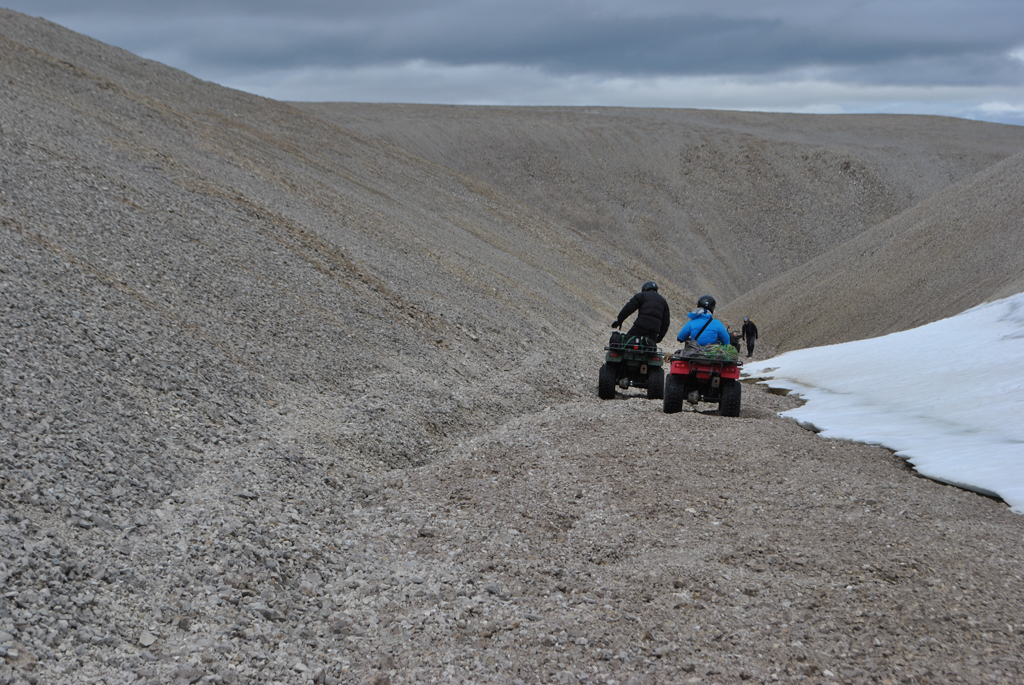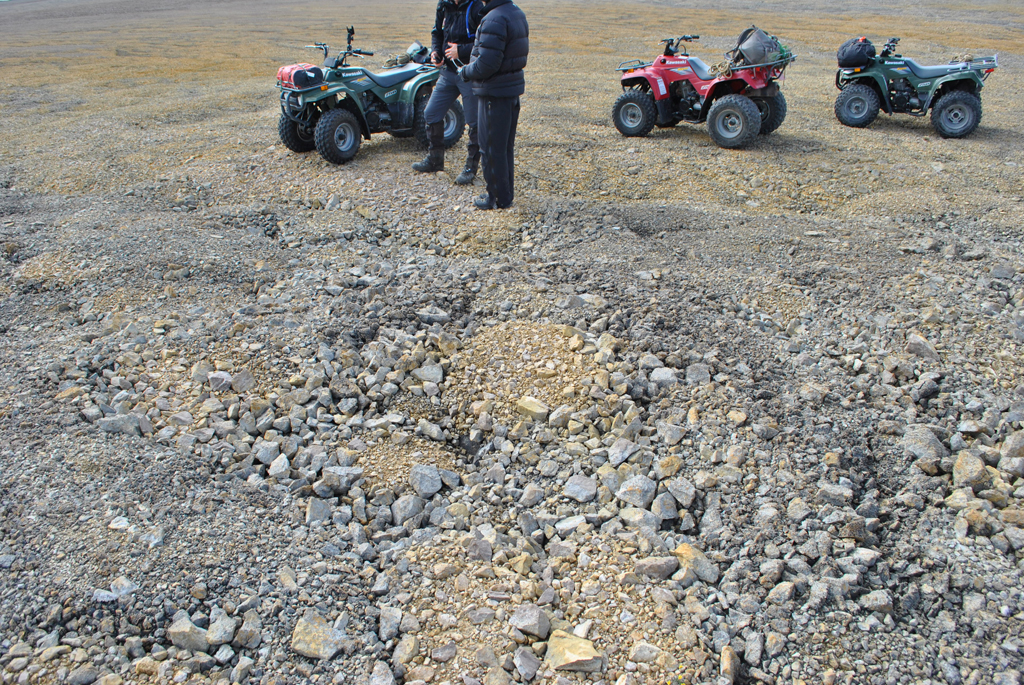With @drcrater, @agraugal and Dr. Jellinek, we started the day on ATV's toward the south-east, relative to base camp location, for a long day exploring the intrinsic of subglacial channels, the main research focus of Ph. D. student A. Grau. Ancient subglacial channels are the relict of a time when glaciers or an ice cap was covering the area before the ice retreated on central Devon Island, 8800 to 8500 years before present (Dyke, 1998). At first glance, subglacial channels look like a usual riverine or fluvial channel... or are they? When looking closely, a few obvious differences are striking, for example:
- Due to this river being under a layer of glacier ice, pressure may be exerted on the subglacial stream, possibly resulting in bed topography gaining altitude in the downstream direction;
- Subglacial channels may be parallel, and quite close one from another;
The goal of today's work is to find a few subglacial channels and cartography the long profile of the channels to later analyze their geometry and distribution in a geographical information system. Here (Figure 1) we are busy mapping this channel.
Being able to recognize the nature of such channels in cold, but non-glaciated environments is useful to understand ancient climate conditions, either in polar regions, or on Mars, for instance.

Figure 1: A few members of our team getting ready to map the longitudinal profile of a possible subglacial channel.
While travelling from one channel to another, we stumbled upon awesome frost-shattered rock mantles, also known as felsenmeers, featured by patterned ground due to the frost action, one of the top interests of mine (Figure 2). I will have to return here to study and characterize the nature of this patterned ground if possible.

Figure 2: Sorted patterned ground forming on plateaus-top. Small sized rock fragments and finer sediments are found in the center of the stone circle, where coarser material was pushed outside toward the rims.